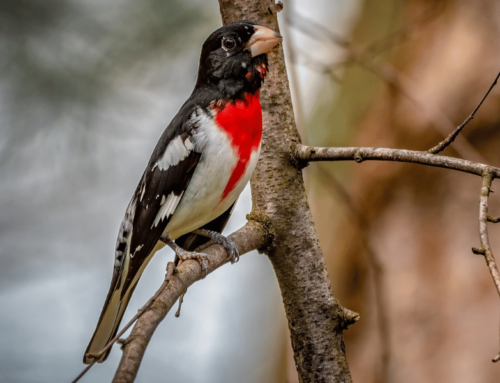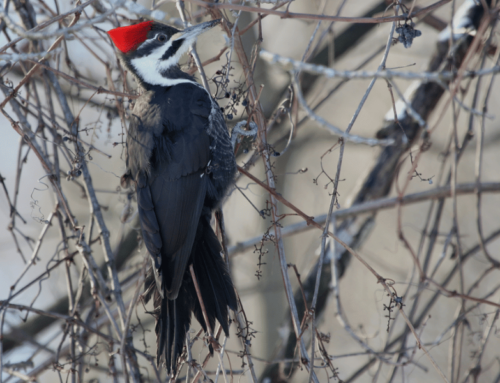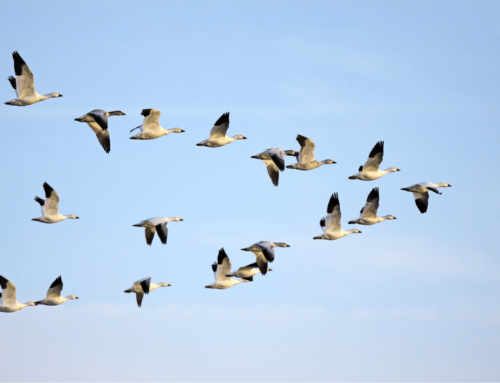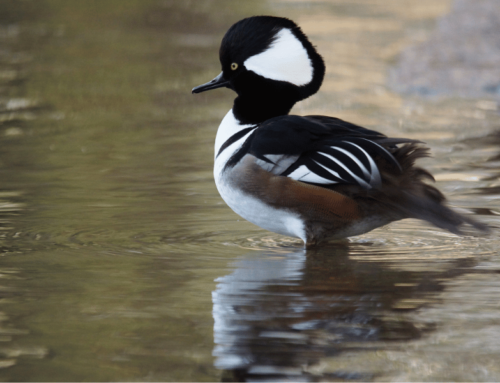This birdwatching guide serves as an introduction to each of the extant families of predatory birds. Raptors, also known as birds of prey, are among the most admired groups of birds and animals more generally. There’s a reason that so many flags include predatory birds as mascots.
Raptors are not defined as a biological group. Falcons for example, are more closely related to parrots than they are to eagles or hawks. Raptors are a term used to define birds who are carnivorous and specialize in preying on other vertebrates. Other large predatory birds, such as herons and pelicans, are not considered raptors even though they are carnivorous.
Not only are they impressive predators but they are used by people for hunting in a practice known as ‘falconry.’
This post is a birdwatching guide for learning all the families of raptors.
Birdwatching Guide for Raptor Families
Eagles
Eagles are large raptors that belong to the family Accipitridae. The overwhelming majority of eagles species are found in Africa, Europe and Asia. In North America, the bald eagle and golden eagle are the only native species.
Eagles are among the most powerful and biggest groups of raptors. This includes the Harpy Eagle, also known as the Royal-Hawk, a species that is well-known for its large size and its preference for hunting sloths and other tree-dwelling mammals, including monkeys. They have the largest talons among all eagles.
On average, eagles have heavier beaks and heads when compared to other raptors and are larger overall. The heaviest eagle is the Steller’s Sea Eagle, which can weigh over 14 pounds (over 6.4 kilograms).
Eagles often prey upon animals that are much heavier than themselves. Animals such as antelope and deer are not uncommon prey animals for eagles.
Species Highlight: Golden Eagle
Golden Eagles are large, ruthless predators that go after large animals including goats and coyotes. They are mostly dark brown in coloration and can reach up to 15 pounds in weight. They are the raptor of choice for Kazakh falconers who have been using them as hunting partners for centuries.
They have been observed hunting mountain goats by grabbing them by the legs and throwing them off a cliff. The following image shows what they look like.

Falcons
Falcons are in the genus Falco. These raptors kill using their beaks, unlike other raptors like eagles and hawks, which are designed for killing with their feet and talons. Falcons, including kestrels, are designed for flying fast and not for flying efficiently. They can’t hover and glide as like vultures and eagles often do to conserve energy. If you see a large bird slowly flying in a circle, it’s almost certainly not a falcon.
Species Highlight: Peregrine Falcon
The Peregrine Falcon is the fastest animal on Earth. It can fly up to 200 m.p.h. in pursuit of prey. It specializes in eating other birds.
This is a cosmopolitan species with the greatest range of any raptor species. The only habitats that they aren’t found in are rainforests and the polar regions. They also aren’t found in New Zealand. This means that finding them shouldn’t prove a difficult task for you. Being a bird-eater, anywhere where smaller birds are found is a good place to look for Peregrine Falcons.
You can identify them by their bluish-gray wings and back and their barred abdominal plumage as shown in the following image.

Hawks
Hawks are a common group of birds that are usually medium-sized when compared to other raptor groups. They also kill using their talons, unlike Falcons. Ornithologists have noted that hawks are among the smartest groups of birds. Harriers are included in this group.
Species Highlight: Harris’s Hawk
The Harris’s Hawk is an interesting raptor because it hunts in packs, whereas other raptors hunt alone. This makes it a modern-day proxy for the hunting style of velociraptors from the past. Their pack hunting allows them to take down bigger prey and gives them a greater success rate. Their high intelligence has made them a popular bird in falconry.
Harris’s Hawks can be identified by their dark brown color overall with reddish patches around their shoulders and white and brown tail feathers. The following image shows one in flight.

Kites
Kites are generally smaller raptors. They are closely related to eagles and hawks. Being smaller on average compared to other birds of prey, kites are more likely to feed on insects.
Owls
Owls are easily recognizable for their unique physical features. They have stocky bodies, round faces, binocular vision and the ability to turn their heads almost all the way around their bodies. It’s a myth however, that owls can spin their heads around as much as they want.
Owls are nocturnal, solitary and can fly silently. Burrowing owls and Northern Hawk-Owls are exceptions as they are both diurnal. Burrowing owls also live social lives. Owls’ eyes are bigger on average than other similarly sized birds. This lets them navigate their nighttime hunting grounds looking for food.
One species, The Great Horned Owl, has given us the well-known “who who” call that we associate with owls.
Seriemas
Seriemas are an interesting family of raptors in part because they are the closest living relatives of the extinct Terror Birds, which were large terrestrial apex predators.
Many who are looking for the physical evidence that birds came from extinct dinosaurs will find the claws of the Red-Legged Seriemas as undeniable evidence of the connection. If you’ve seen Jurassic Park, you are familiar with the sickle-looking claw of the velociraptor. Lots of modern-day raptors and ratites have large talons and claws. However, the red-legged seriema’s claw is the only one among them with an upward-curving claw, giving us a way to look into how extinct theropods used their claws.
After observing red-legged seriemas use their claws, it’s been concluded that the claws are for pinning prey, not slashing them. The following picture shows the Red-Legged Seriema’s velociraptor-like claw.

Vultures
Vultures are known the most well-known carrion-eaters in the bird world. A common feature that can help identify vultures is their bald heads. Their stomachs hold very strong acid (usually close to a pH of 1). This is what allows them to eat rotting carcasses without dealing with the bacterial consequences.
In terms of size, vultures give eagles a run for their money. Condors, which are a type of vulture, along with old world species are among the biggest raptors in the world. It’s recently been discovered that condors can reproduce via parthenogenesis. This means they can lay eggs without male fertilization.
Although, many believe that vultures will fly in a circle when they are waiting for something to die, this is not true. Vultures try to fly as efficiently as possible. When vultures are circling in the air, they have found rising warm air, that allows them to stay airborne without having to flap their wings repeatedly. During this activity, they will still look for prey. They just haven’t found it yet. It’s actually much more common for vultures to wait for predators to bring down their prey and for vultures to then fly down and eat whatever is left.
Vultures can be found on all continents except Antarctica.
Species Highlight: Bearded Vulture
This is a beautiful, large species of vulture. It’s the only known species that specializes in eating bone. They do not have bald heads like most other vultures and are usually found in the mountainous regions of Asia. Although its appearance is rare, it can be found in the Alps occasionally, making it the largest bird in that mountain range.
Bearded vultures have an orange coloring to their feathers. This isn’t their natural plumage as their feathers are originally white. After zoologists tracked and watched bearded vultures for years, they were observed bathing in water with high levels of iron deposits. The following image shows a bearded vulture with its normal appearance.

Single Species Families: Osprey, Secretary Bird
Secretary Birds
These birds are mostly terrestrial raptors that are found in Africa. They can be identified by the red/orange present around their eyes, along with their crane-like legs. The backs of their heads have several prominent and distinct black feathers. One unique feature is their long eyelashes.
If you’re already aware of this species, you probably are aware of them because of their snake-hunting abilities. This raptor kills by stomping on its prey with its talons. However, the secretary bird’s diet is actually much more diverse than simply specializing in snake hunting. They eat lots of insects and smaller vertebrates as well.
Osprey
The osprey pertains to a single species of raptor that can be found worldwide. They can be identified by their black and white plumage. Antarctica is the only continent they don’t inhabit. Some taxonomists regard ospreys as two separate species instead of multiple subspecies. They look like they could be a type of eagle or hawk, but most biologists put them outside of those groups.
Ospreys are skilled fish hunters. They can be found nesting near bodies of water, where you can watch them dive into the water and fly off with fish in their talons. The more fish are present in a body of water, the more likely you’ll see Osprey.
Conclusion:
All families of raptors have interesting birds to look for when you go birdwatching. They’re also a common type of animal and chances are that there are several species at least who are native to your location. Take note of the information in this birdwatching guide to help you on your next trip.





